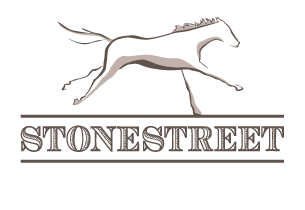The anatomy of a horse’s hoof can be broken down into three separate parts; the heel, quarter, and toe. The amount of blood flow and degree of sensitivity increases from the outside of the hoof inwards.
The outermost exterior of the hoof is called the “wall”and can be compared to a human fingernail. It is much thicker, and like a fingernail, it has no feeling. Just inside the wall, connecting the wall and the sole is the “white line”. The white line serves as a visual identifier to the farrier; it has no feeling but everything within it is live tissue.
Directly inside the white line is the “sole”which is the non-weight bearing base of the hoof. In the middle of the sole, extending about two thirds of the length, is the “frog”. The frog performs the functions of shock absorber and pump, sending blood from the hoof to the heart. Just as the wall can be compared to the human fingernail, the exterior layers of the frog can be compared to the human nail cuticle.
HOOF PICK
Essential hoof maintenance is carried out by a groom daily using a tool called a hoof pick. When picking out a horse hoof, debris such as sand, dirt, hay, and other foreign materials are removed.
Horses experience this within the first couple weeks of life. Getting a young horse familiar with having their hooves picked is started by two people; one holding the horse, while the other picks up the hoof. Handlers begin by only tapping the hoof with a hoof pick then progressing to using the tool in its full capacity. Eventually the routine is established and the horse is familiar and comfortable with the feeling allowing for a single person to complete the job.
Getting young horses familiar with this process helps to ready them for when regular
farrier visits begin. In horses of all ages, daily picking of the hoof is done while simultaneously checking for any infections or injuries to the hoof.
Horses spend their time in the stall, in a field or paddock, and on the racetrack. Bacteria and fungal spores are in every location and attach to the hoof in transit. There are also many natural situations that can encourage bacterial and fungal growth such as walking through standing water, mud, and sand. Picking hooves can prevent growth of bacteria and fungus, which may prevent infection.
There are several different infections that can occur in a horse’s hoof. Thrush, one of the most common bacterial infections, is caused by a bacteria found naturally in the environment and is specific to the frog region. As the frog grows, it sheds the exterior layer creating “flaps”. Symptoms of thrush can be detected most obviously by a distinct odor, but there may also be a black discoloration of the frog. Picking out the frog helps to prevent the infection by removing dirt and other materials from the flaps where bacteria likes to grow.
Hoof maintenance is important at every stage of a horse’s life. As their mode of transportation, every step should be made to make sure their hooves are healthy and strong. Hoof maintenance and overall care of a horse allows them to be comfortable and happy.
